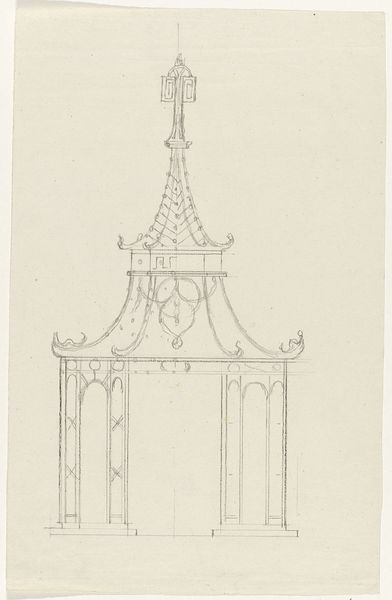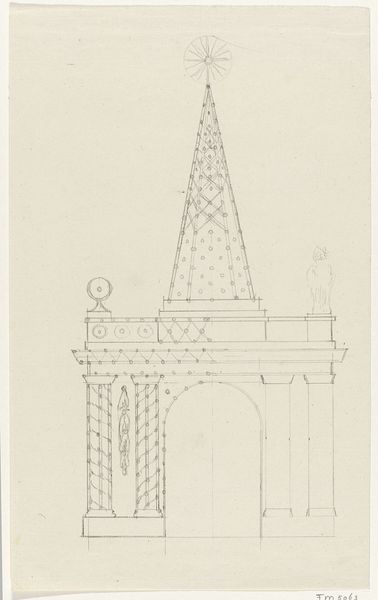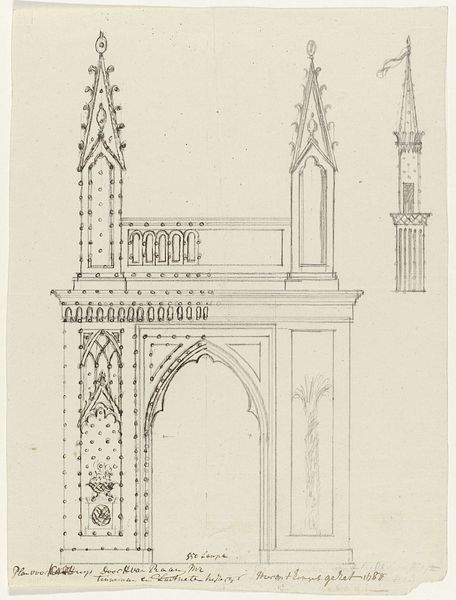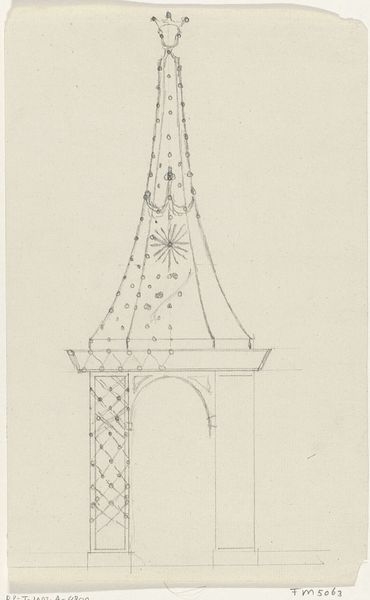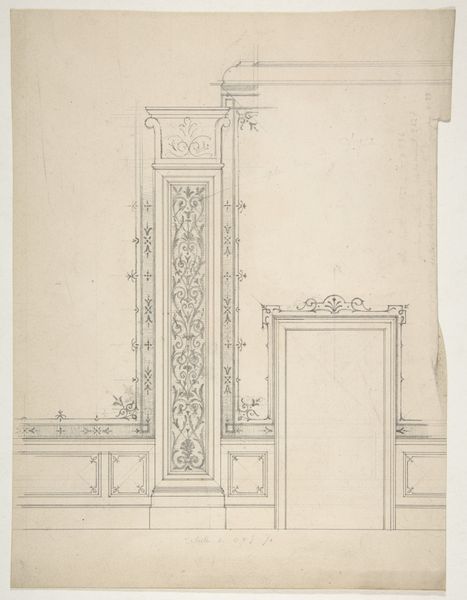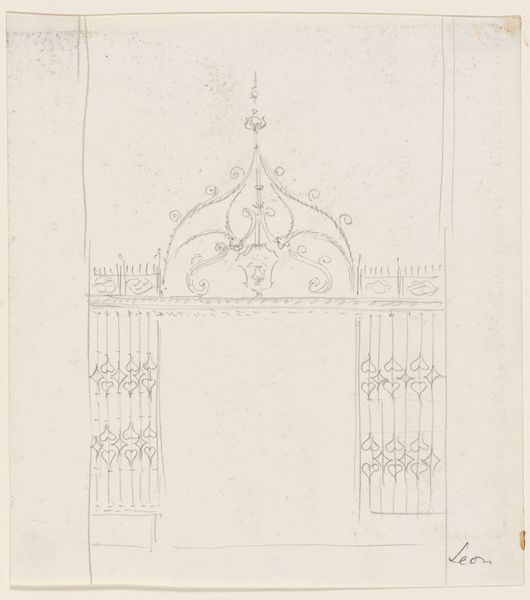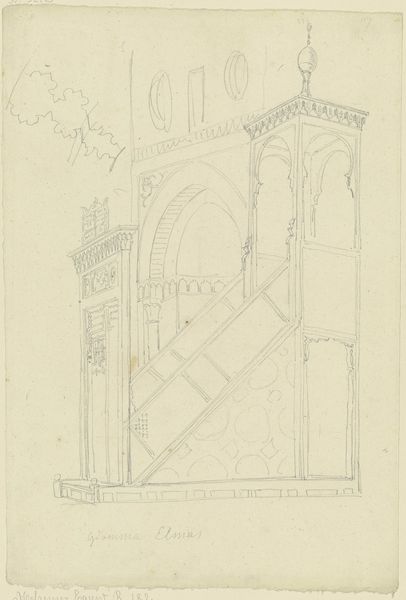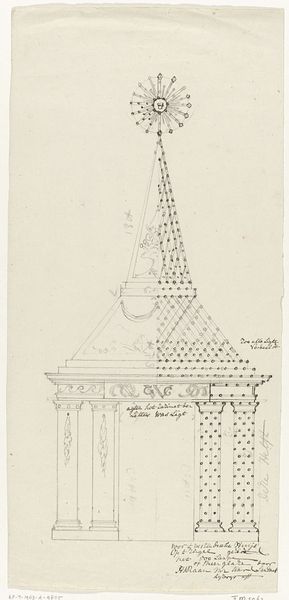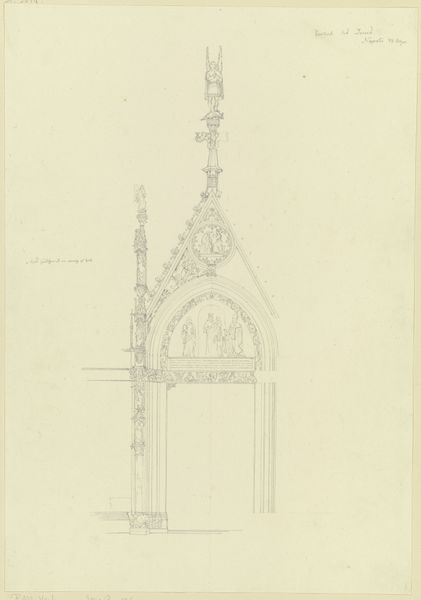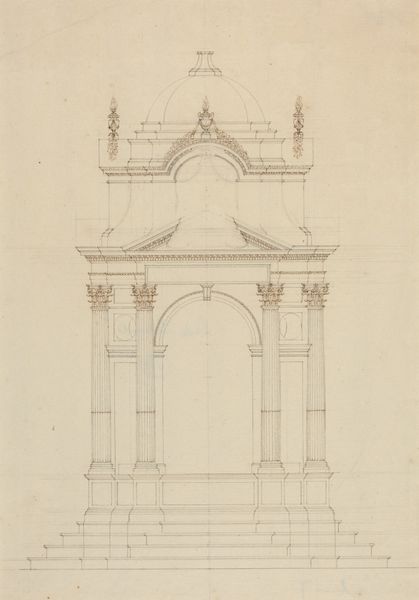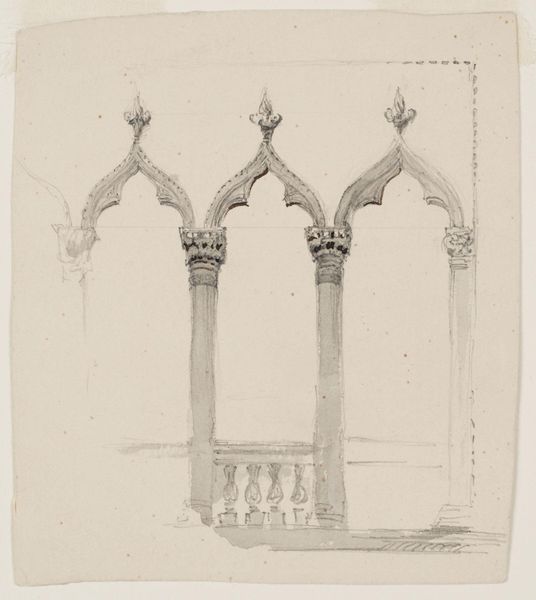
Ontwerp voor illuminatie van het huis van Hasselaar Lynslager te Amsterdam, 1788 1788
0:00
0:00
drawing, pen, architecture
#
drawing
#
neoclacissism
#
form
#
geometric
#
architectural drawing
#
line
#
architecture drawing
#
pen
#
architecture
Dimensions: height 338 mm, width 220 mm
Copyright: Rijks Museum: Open Domain
Editor: This is "Ontwerp voor illuminatie van het huis van Hasselaar Lynslager te Amsterdam, 1788", a pen drawing by Hendrik G. van Raan. It depicts what seems to be a blueprint of an illuminated house facade. The symmetry and line work create a very ordered, almost celebratory, feeling. How do you interpret this work? Curator: The symmetry is indeed key, especially in the context of Neoclassicism, it evokes a sense of order and rationality reminiscent of ancient Rome, right? Now, consider the 'illuminatie' itself. What do you think the starburst at the apex might symbolize? Think about the era: the Enlightenment. Editor: Perhaps it represents knowledge, like a beacon of reason overcoming the darkness? Curator: Precisely! Illumination in this context isn't just decorative; it's symbolic. The geometric shapes also tie into this emphasis on reason. This wasn't just a design for a building; it was an architectural statement. And those repeated circles? Almost like watchful eyes? How does this change your interpretation? Editor: I hadn’t considered them as “eyes”, that brings a sense of observation and possibly vigilance. Curator: The illuminated house, therefore, transforms into a visual embodiment of enlightened principles, actively watching, observing, radiating knowledge onto the world. This goes beyond mere aesthetics, wouldn’t you say? Editor: Absolutely. I see it now; the drawing is less about the design and more about the statement the illumination makes about the inhabitant’s values. Curator: Indeed, and how visual symbols convey ideas of cultural significance for both past and present audiences. A powerful testament of architecture.
Comments
No comments
Be the first to comment and join the conversation on the ultimate creative platform.
